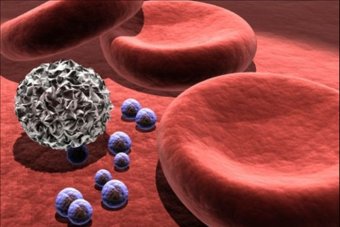When you’re feeling fit as a fiddle, you tend not to think too much about your immune system. But given that we’re in the middle of cold and flu season, chances are many of us are wondering how our bodies ward off diseases.
All around us are bacteria, viruses, parasites and a whole host of other nasties that have the potential to make us very ill. Yet amazingly, most of us don’t get sick that often.
This is because your body is able to fend off these potential invaders with several layers of defence, otherwise known as your immune system.
Not only is your immune system designed to seek out and destroy disease-causing bugs, it also remembers bugs it’s encountered so they are swiftly dealt with when they return.
Layers of defence
When you come into contact with a bug, your first layer of defence aims to stop the ‘invader’ from entering your body in the first place.
It might help to think of this as a little like a moat around a castle. Your outer layer of defence includes a physical barrier (your skin) and bodily fluids designed to kill or wash away infections (your tears or mucus found in parts of the body lined with mucus glands, your nose and respiratory tract).
It acts the same way every time, regardless of the invader/bug that it encounters and it’s a very effective way of protecting us from infections.
But some infections manage to get past this front line (making their way across the moat and kicking through the draw bridge). At this point, your body activates a complex system designed to seek out and rid your body of the infection.
This adaptive immune system, which helps your body adapt to the infection and create immunity, is somewhat like the castle guards who run from room to room seeking out the marauding invaders.
Fighting an infection
Dr Penny Burns, a Sydney-based GP and spokesperson for the Royal Australian College of General Practitioners, says: “When the body senses there is a virus or other infections, such as bacteria, the body reacts to try and destroy the foreign invaders.”
One of the first things that happens is a type of white blood cell called a macrophage is activated.
“Macrophages recognise a virus or other infections as foreign and swallow them up to destroy them,” Dr Burns said.
However, the macrophages can be overwhelmed — particularly if you get a large dose of the infection.
“This means not all the viruses are destroyed,” Dr Burns said.
“Viruses can’t live alone, they come into the body and circulate in the blood looking to migrate into human cells where they can replicate and grow and increase in numbers.
“As the virus goes on to multiply inside your body you can get symptoms of an infection.”
It’s at this point the body needs to ramps up the way it fights the infection and activates other parts of the complex immune system. This includes activating other types of white cells (B-cells and T-cells).
“B-cells make protein antibodies that attach to the virus and label it as foreign for other cells to destroy,” Dr Burns said.
She said T-cells work to clear our body of infections: “They recognise infected cells and destroy them.”
“After an infection has cleared, a small number of B and T cells persist in the blood with memory of the virus, allowing them to activate and destroy viruses more quickly next time they enter the body.”
This is known as immunity. It doesn’t really matter if the infection you’re fighting is bacterial, viral or a parasite — the general process is the same.
This is also how vaccination works. When you have a vaccination it’s like inserting a “false memory” into your immune system.
You’re able to develop immunity without the discomfort of having an illness, Dr Burns says: “You get a jump start on killing the virus”.
What’s making you feel lousy?
The symptoms you experience when you come down with a cold or flu are not only the result of the infection, they are also the result of your body’s immune response to the infection.
For example, Dr Burns says: “Fever is the body’s response to the virus. Increasing body temperature can inactivate the virus.”
When you get an infection, as well as white cells your body also activates other systems including cytokines (chemical messengers) and the complement system (a series of proteins designed to kill infections).
These trigger inflammation and can cause symptoms like redness, warmth, swelling, pain. So your runny nose is actually caused by a local inflammatory response to the virus.
But you can have an infection and not actually have any symptoms. This is known as a subclinical infection.
“You may have got a subclinical dose of the infection where you feel a bit irritable and grumpy as you fight off the virus but don’t even realise you have an infection,” Dr Burns said.
There are a number of factors that will determine whether you will get sick after you’ve been exposed to a cold or flu virus, including:
- whether you have had it before or been vaccinated (that is, your immunity to the virus);
- what size dose of the virus you got;
- how infectious and virulent the bug is; and
- your general health and how well your immune system is functioning.
“Most healthy people have a healthy immune system. And it’s normal to get a number of infections each year.”

